A postillion: the rider of a leading pair of horses
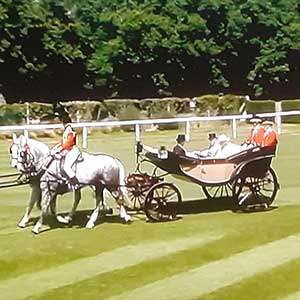
A postilion (also spelt postilion and postillian) is someone who rides the lead nearside horse of a pair in order to guide them while pulling a carriage. Today horsedrawn carriages are normally seen only on ceremonial occasions with several pairs of horses pulling a heavy, decorative carriage or a hearse, so it is rare to see a postillion. This page describes the difference between a coachman and a postillion, a postillion's work with coaches, carriages and funerals their dress code.
____
Extracted from the memoirs of the webmaster's mother (1906-2002) and edited by the webmaster with further research
Postillion or coachman: what's the difference?
Postillion
A postillion guides the horses from his position seated on the nearside of the lead pair of hourses. There is not normally a coachman as well, although there can be on major ceremonial occasions.
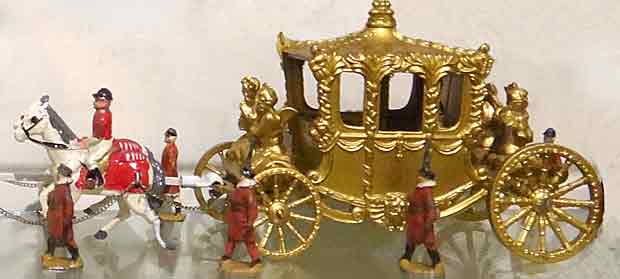
Postillion, seated on the front nearside of a pair of horses and guiding the horses as they pull a carriage - toy model photographed in Brighton Toy and Model Museum
Coachman
Many photos of Victorian and Edwardian funeral processions show the drivers of coaches or carriagse wearing top hats and seated high up at the front of the vehicles. They were called coachmen and their role was to guide the horses.
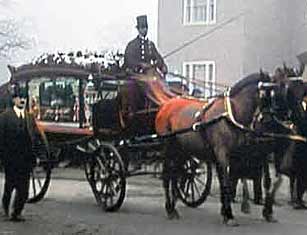
Coachman, seated high up at the front of a carriage and guiding one or more horses
How many postillions in a ceremonial procession?
On major ceremonial occasions, there can be more than one postillion as suggested in the following newspaper drawing.
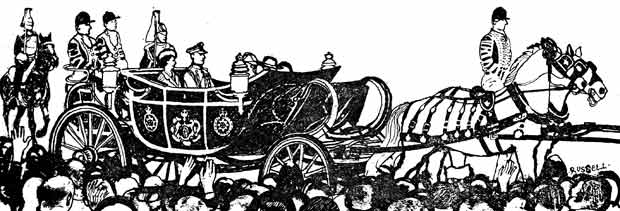
Although this old newspaper drawing shows just one postillion, out of the picture on the right are harnesses connecting one or more pairs of horses. There would need to be a postillion on the front pair as well in order to guide the horses effectively.
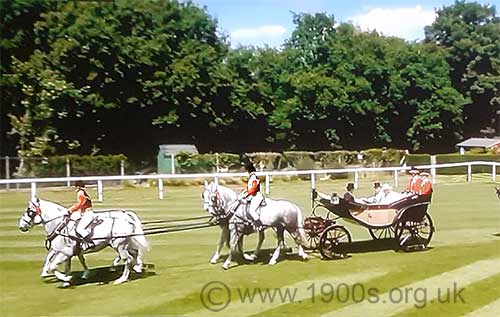
Colour photo showing more than one postillion
Common sightings of postillions in the past
For most ordinary people in Victorian and Edwardian Britain, sights of major ceremonial occasions were rare - but funerals sadly were not, and the only way to carry a coffin to a graveyard was by a horse-drawn hearse of some sort. Poor people probably used a farm horse and cart, but hearses could be very elegant. Then it was often fitting for the occasion for the horses to be guided by a postillion.
An old book confirms that postillions were in funeral processions:
The coffin, half hidden among flowers, was in a hearse drawn by six black horses richly caparisoned in purple and gold. On one of the front horses rode a postillion .... ('caparisoned' refers to a horse without a rider.)
From Gypsies of Britain: an introduction to their history, 1944
Dress code of postillions
My mother told the story of seeing funeral procession as a child and going home and telling her parents that she had seen a jockey. She was told in no uncertain terms that it was a postillion, not a jockey.
Her mistake was not surprising because postillians all wore the same type of clothes rather like the uniform of the job, and at first sight, they were like those of a jockey.
The old book goes on to describe the dress code of a postillion:
... a postillion wearing a tight fitting black tunic and purple knee-breeches and a black jockey cap...
Unfortunately the above photos do not show colour, but the shapes of the clothes are clearly as the book describes.
A postillion's boots, though, were different and unique to his type of work. Because it could be dangerous if one or both his legs got caught between the two horses, the boots were reinforced inside with iron. They were made of black leather like most boots of the time, but the foot part was larger with a loose iron lining. There was an internal iron ring a short way down from the top of the boots to add further protection.
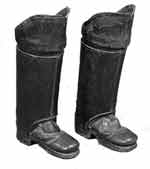
Postillion's reinforced boots
| sources | webmaster | contact |
Text and images are copyright
If you can add anything to this page or provide a photo, please contact me.



